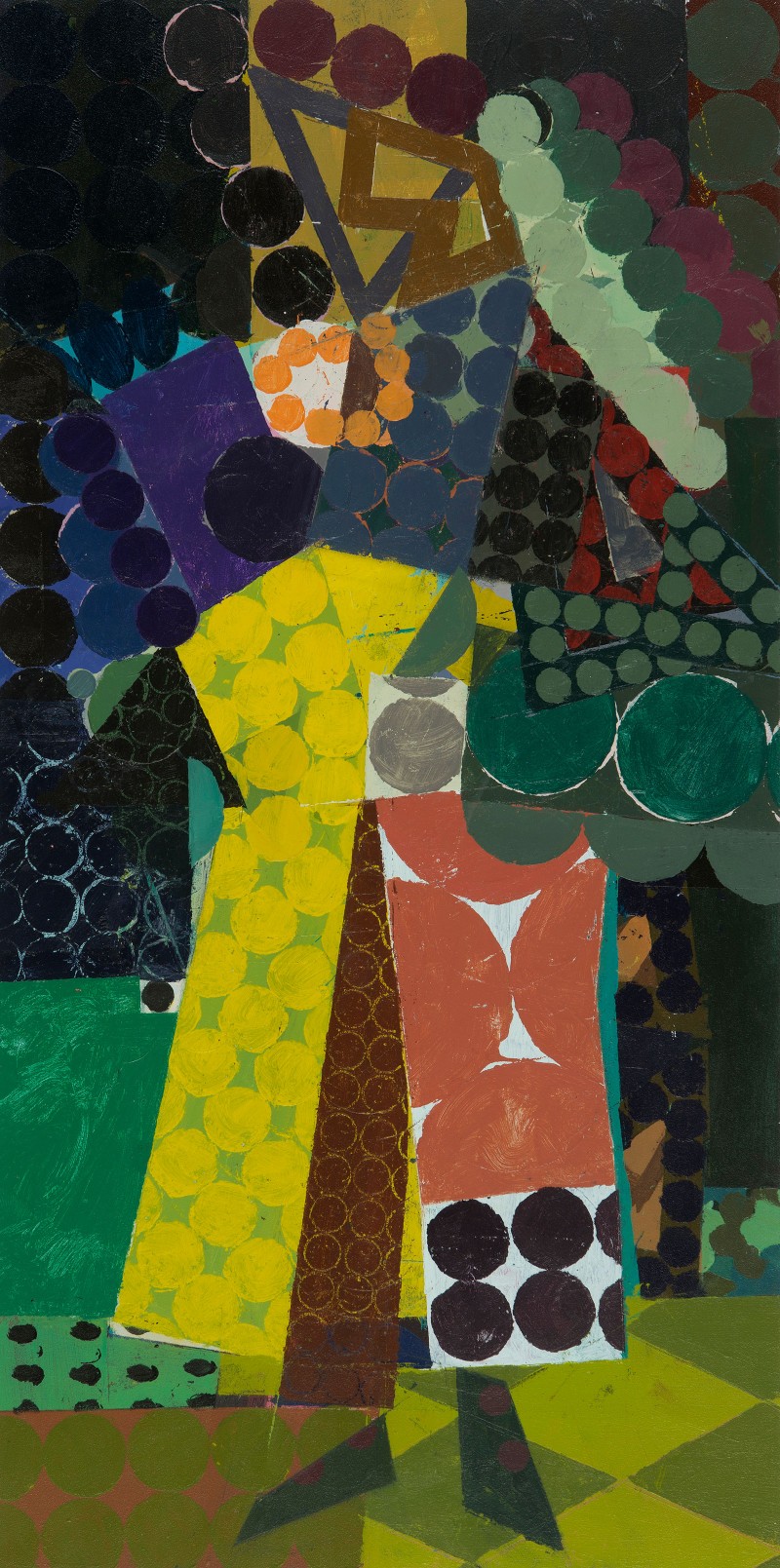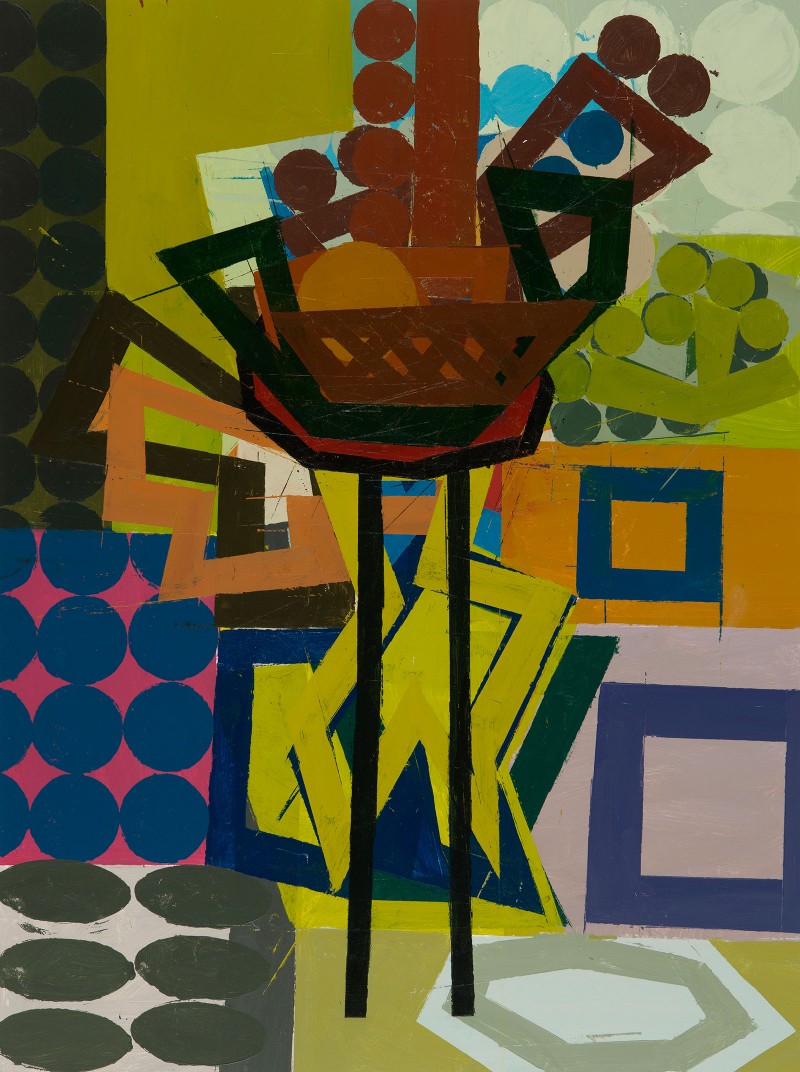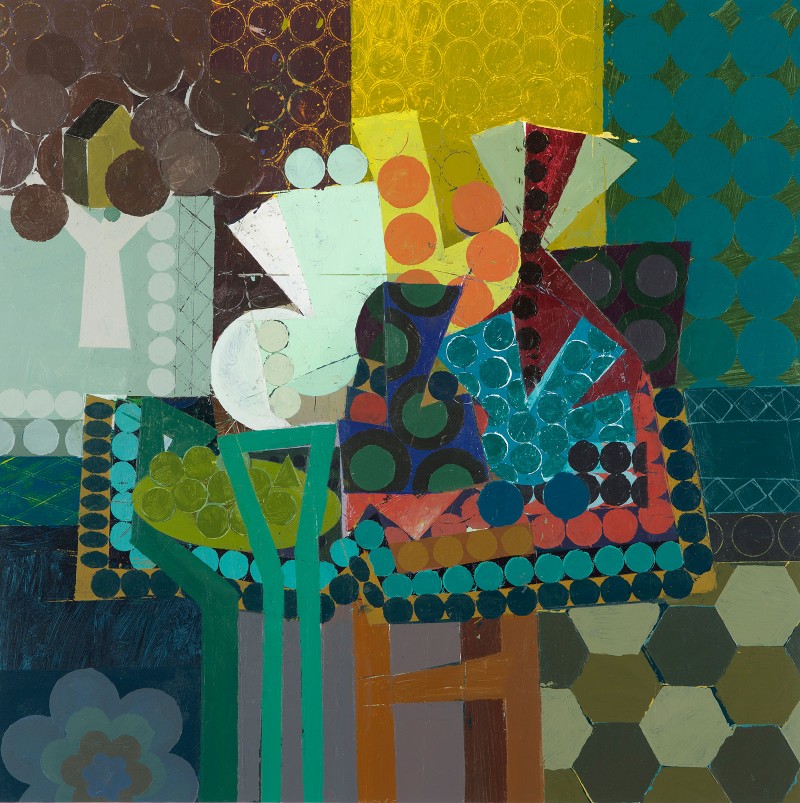The prolific painter Ken Kewley has produced a show of most unusual paintings, which emphasizes planes of the figure, landscapes, and still-lifes, but with a twist.
In his show at Gross-McCleaf Gallery, Kewley uses the spirograph, a fancy name for the plastic geometric stencil, to make circles, stars, and curves. It’s a device used by architects and children alike, and yes, even artists.
Joyfully chaotic geometry

At first, his paintings—using stars, circles, and curves for everything and in his signature undiluted secondary colors—are disconcerting because it is sometimes hard to figure out what the image is unless you step away from it.
Use of repeated geometric shapes in art is not unprecedented. The Cubists, of course, split their images of the world into rectangular and other geometrical shapes. In the Pop Art era, Roy Lichtenstein painted large circles of color, which were enlarged cartoons of Ben-Day dots used in newspaper printing. Josef Albers used squares within squares to make color theory paintings. Today, computer users can zoom in on images so closely that they become pixelated and seem like abstract color fields of tiny squares.
If you look closely at one of Kewley’s 18 acrylic paintings on wooden panels, you see geometric colored shapes arranged in striking ways, thanks to his spirograph. But if you step back about four feet, you can see that there are recognizable shapes of figures, landscapes, and flowers.
Unlike traditional Western realists, Kewley paints the main subject of his images in the foreground of the picture plane, a technique known as “Japanese perspective” and used in wood-block prints in the late 19th century. His collage-like style in the foreground, however, reminds me of Braque’s work in Paris 100 years ago. When I mentioned this to Kewley, it turned out that Braque is his favorite artist, and at one point, he posted a work of the famous Parisian every day on his Facebook page.
Like Braque, Kewley is constantly readjusting colors and shapes in these paintings, searching for a color balance as well as a balance between abstraction and the figurative.
Take for example, “Figure V,” which suggests a figure in a long yellow coat with triangular feet—the feet of Russian icons—protruding. The face is a triangle and his hat, circles of greens and purples. Or is that “face” really just an elaborate elbow on a table? Go figure.
Kewley only uses one brush—acrylics dry fast—and if he does not like a circle of a particular color, he replaces it with another, letting the edges of the first color peek through–it’s kind of messy, but intentional. He sometimes paints in code, using a dark circle to represent a shadow.
“I love messy precision, very loose and very specific at the same time, wildly using a straight edge, the straight line drawn by hand and the messy mark drawn with the use of a straight edge,” he writes in “Notes on Color,” an online document of his, which he is constantly refining.
Kewley at play

In the 24-inch by 18-inch painting “Tall Still Life,” a basket of dark fruit sits on a small table with tall black legs against a lighter and more colorful backdrop of squares within squares, and circles and ovals. The interplay between light and dark colors, in turn, moves the viewer’s eye to and from the dark basket of fruit, which anchors the piece, keeping the almost chaotic background from taking over.
Clearly, Kewley is at play, with color and shapes and art references plucked from the history of art. He works intuitively, mixing things up and enjoying himself, changing the meaning as he goes. And he leaves it to viewers to figure out what they are looking at.

In “Large Still Life I,” a 24-inch square painting, what appear to be flowers sit on a table near a window with a tree on a clear day, yet patches of color represent the floor, walls and table legs —all vertical. The foreground image is a bricolage of shapes so chaotic and colorful it creates a stormy center for which the dark, flat, Matisse-like tilted floor and Byzantine patterning in the background is the calm.
Kewley has appeared in at least 25 solo exhibits and more than 55 group shows. He has lectured and taught at more than 24 universities and art schools in the U.S., Israel, and Italy. He has illustrated a children’s book, Mama, and is continuing to expand his “Notes on Color”.
The artist may be an anathema to teachers who promote academic art, but art students are drawn to his enthusiasm, knowledge of art history, and dismissal of “rules”. He wants students to enjoy how paint is applied to canvas, not worry about color theory, but to focus on large flat planes of objects and figures, without worrying about details. But in his own way, he is teaching color theory through feelings and sight.
As he says in “Notes on Color”: “A colorist loves colors as a writer loves words. It is the love that comes through when the mind gets out of the way. Don’t think too much. Trust your instincts.”
Ken Kewley’s New Paintings is on view at Gross-McCleaf Gallery until Feb. 26,2016.









